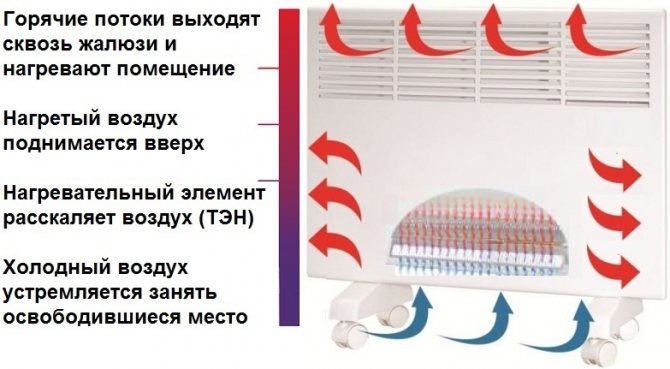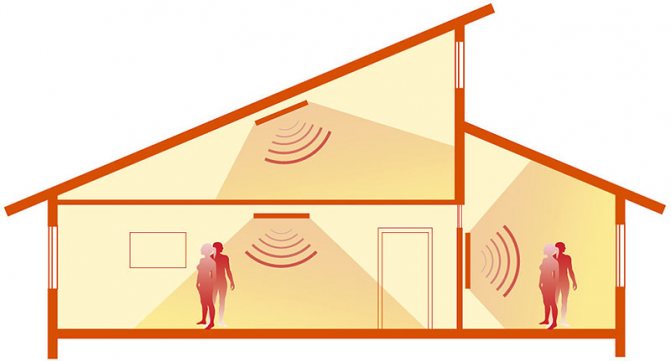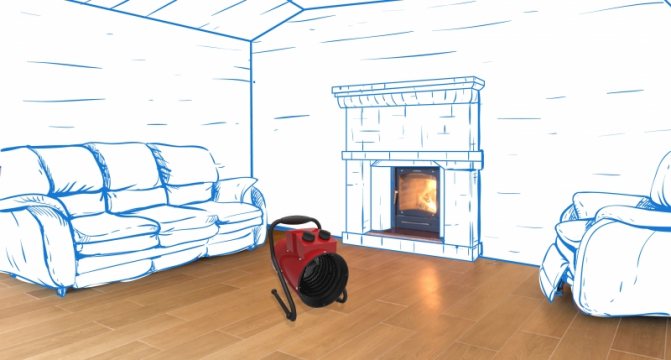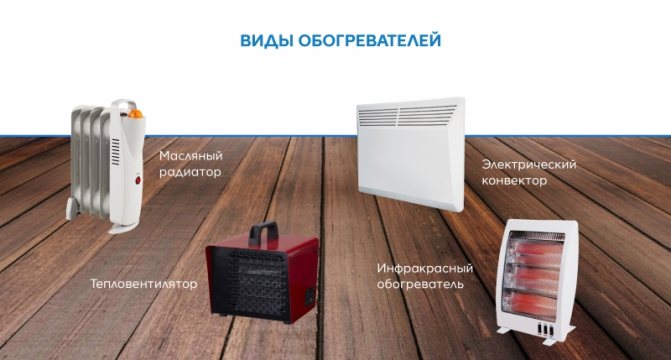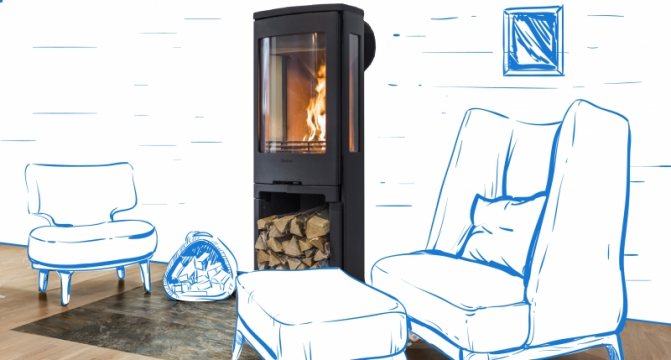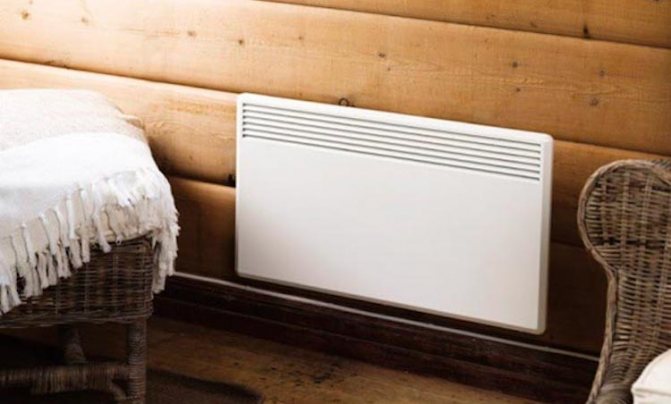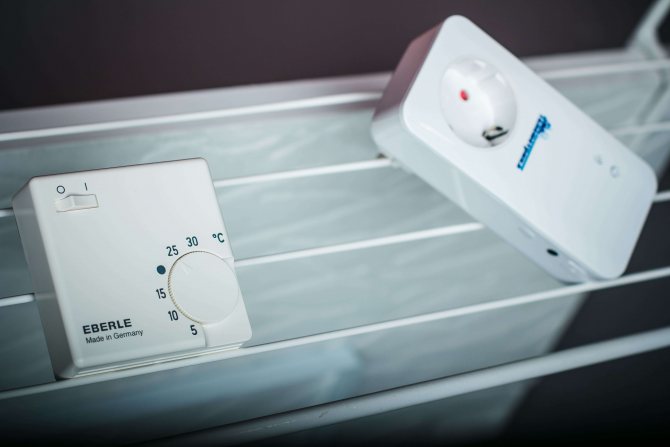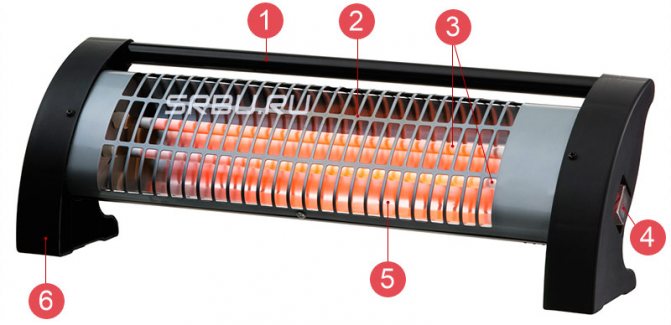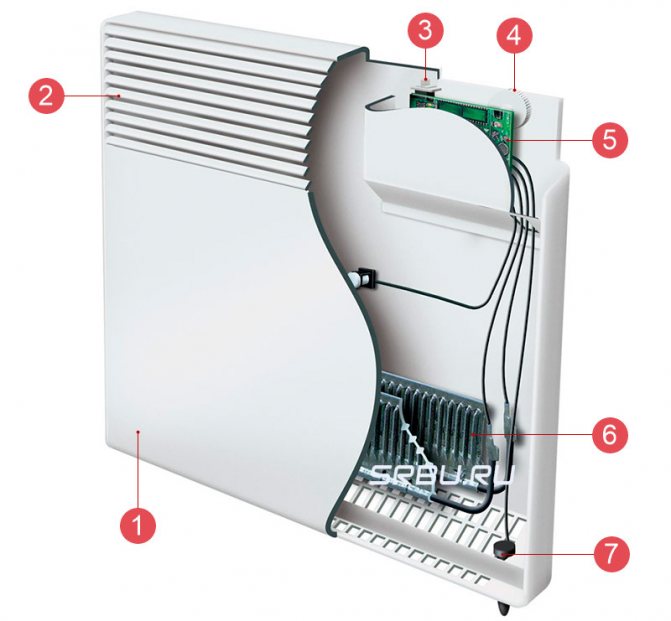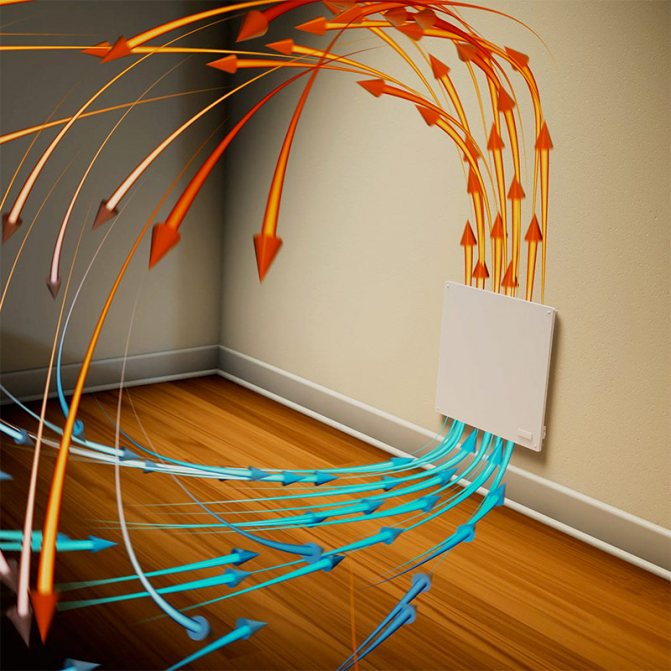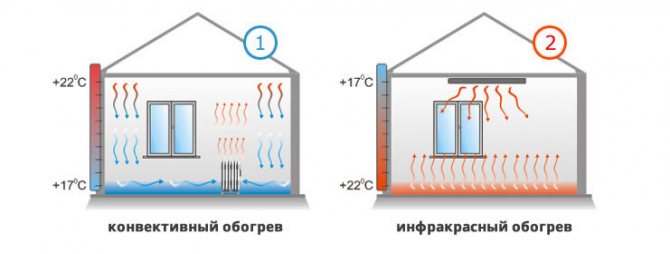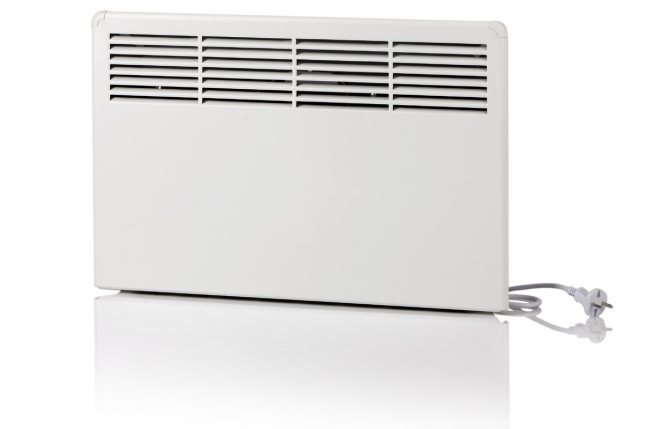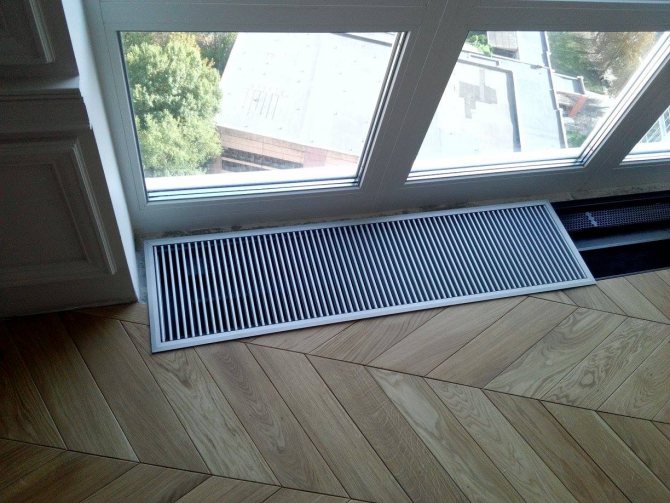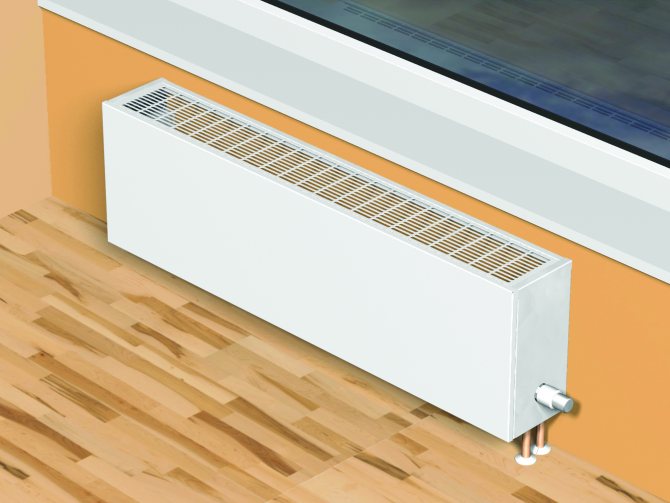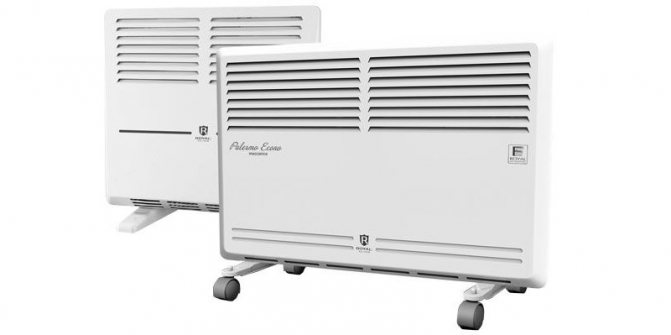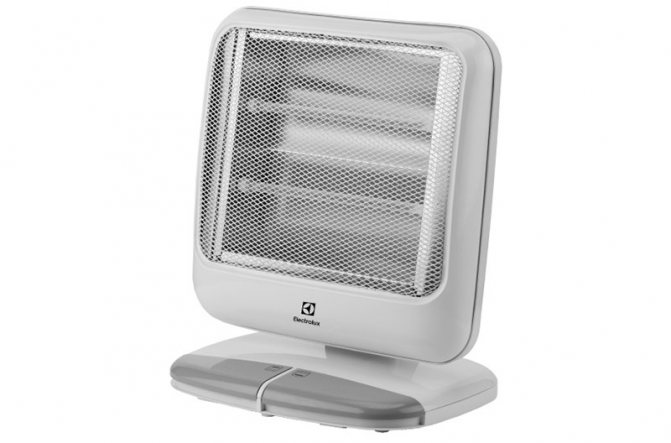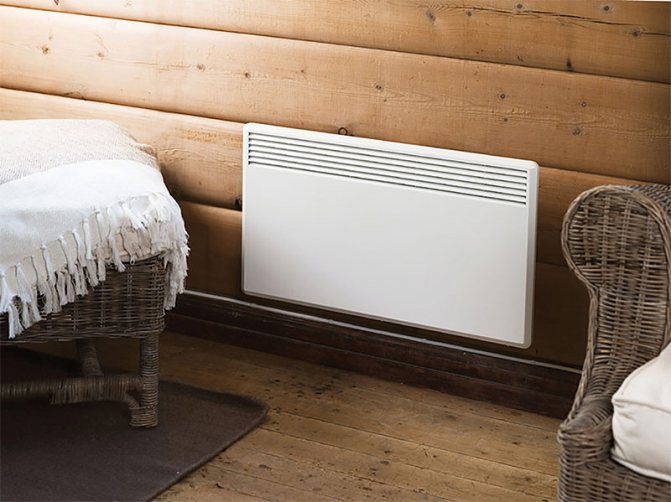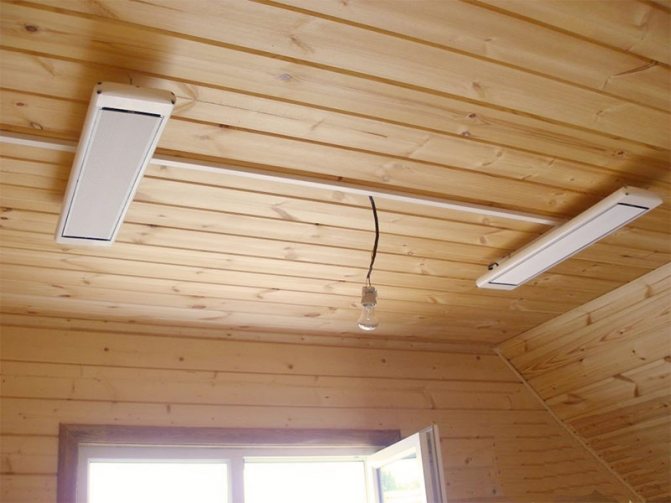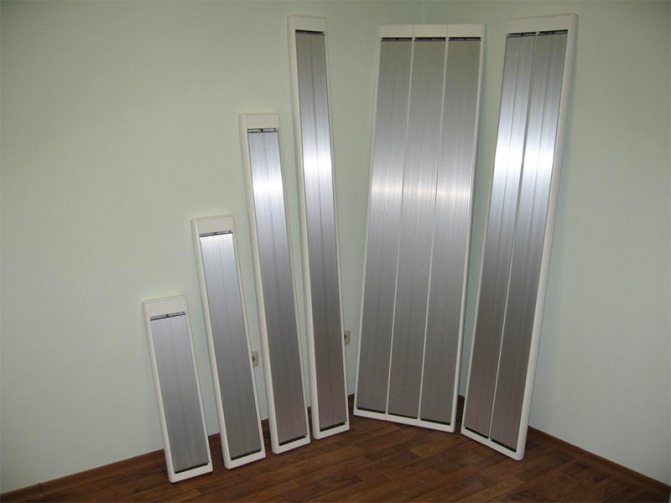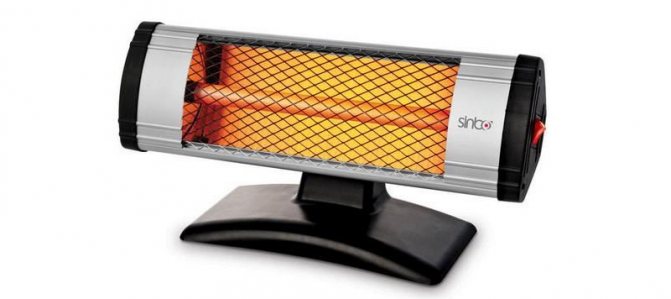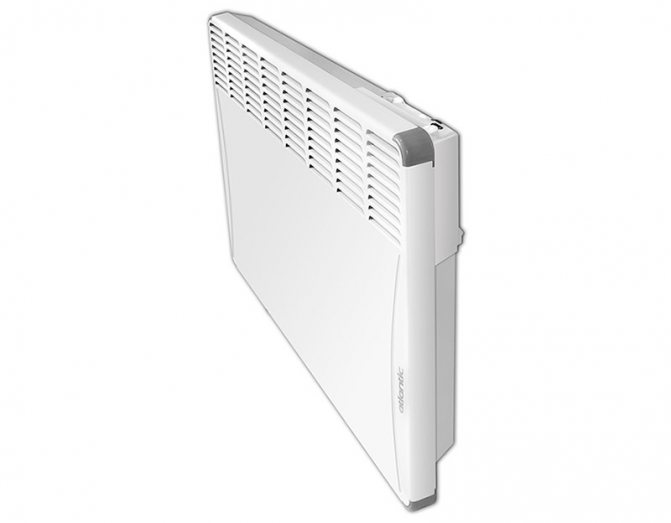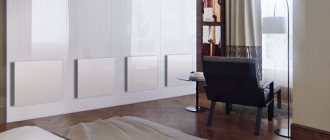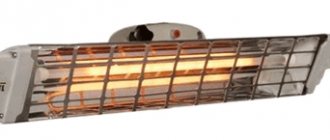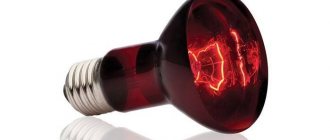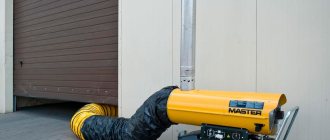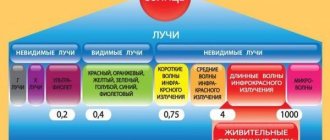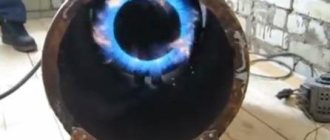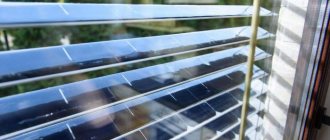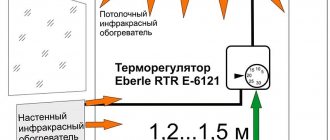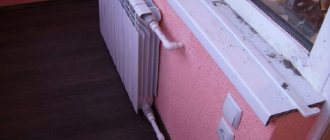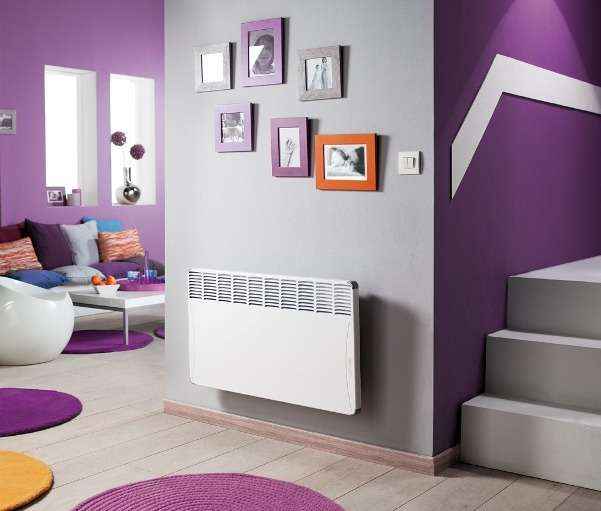
It's not worth talking about the popularity of electric heating once again. If there is no possibility of connecting a gas main, then heating the room with electricity is practically the only way out. It is worth noting that for summer cottages or country houses, an electric convector is a particularly reasonable and right choice - a practical, effective, safe and unpretentious device.
Specifications for this type of device may vary depending on the manufacturer and specific model.
The device and principle of operation of the electric convector
The electric convector is one of the most popular heaters used for heating domestic, industrial and office premises. Despite the rather wide popularity of this type of heater, few people have an idea of how it works, and what these or those convector controls are for.
The principle of operation of an electric convector is based on natural circulation (convection) of air. The convector, as a rule, has a rectangular shape, inside it is an electric heating element.
There are openings on the surface of the convector for air circulation. The convector is designed in such a way that the air coming from the bottom and side openings heats up after passing through the heating element and then exits through the openings located on the front panel of the convector.
For example, an oil-type heater heats a room due to heat radiation that comes from heated radiators. The convector has a different principle - the room is heated by a directed flow of heated air. Thanks to this, the convector heats the room much faster and, which is equally important, evenly over the entire area.
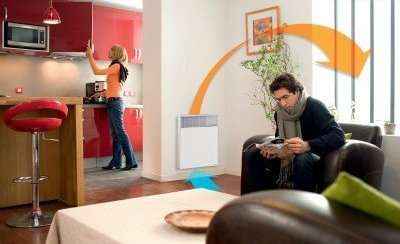

Air convection into the room
The heating element of a modern convector is low-temperature, it is made of a special alloy, due to which it heats up much faster than conventional tubular-type heating elements. As a rule, after 30 - 60 C ° after being connected to the network, the convector already begins to give off heat to the room.
The efficiency of this type of heater reaches 90% due to the fact that almost all the energy is spent on heating the room, unlike other types of heaters, for example, oil, which begins to give off heat to the room not immediately, but only after its heat-conducting medium warms up - oil, and then its metal case (radiator).
There is an opinion that heaters, including electric convectors, burn oxygen. But is it really so? As mentioned above, low-temperature heating elements are installed in the electric convector, the maximum heating temperature, as a rule, does not exceed 60 ° C.
At this temperature, oxygen is not burned, which is a significant advantage of the convector compared to other types of electric heaters, in which the heating elements are heated to several hundred degrees. In addition, the low operating temperature of the convector allows it to be installed almost everywhere, including near fire-hazardous surfaces, for example, on a wooden wall.
Here the question is pertinent, and how can a convector effectively heat a room if the operating temperature of its heating elements is much lower than in other types of heaters?
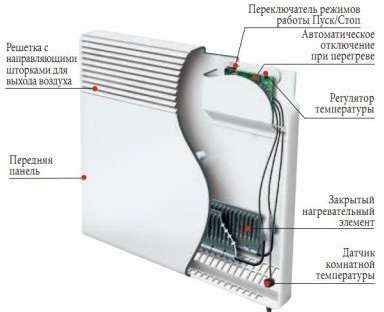

Electric convector device
The convector heating element is much larger than heating elements that have a higher operating temperature.Due to this, the convector emits a sufficient amount of heat and, despite the low operating temperature of its heating elements, is able to heat a large area.
Infrared heaters
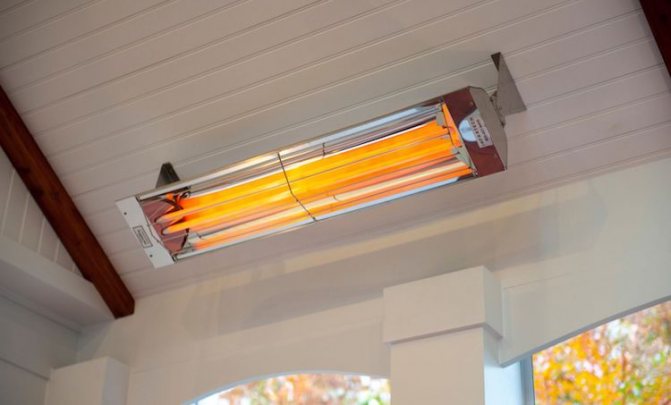

Infrared heater for summer cottages
The principle of its operation is as follows: infrared waves do not warm up the air, they heat objects that fall within their radius of action. It can be furniture, pets, people. And already heated objects will give off heat to the air and heat the room.
It is recommended to hang such heaters from the ceiling. In this case, they will be more effective.
Their advantages are as follows:
- Quite economical;
- Can be used outdoors;
- They work quietly;
- Safe;
- Do not dry the air;
- The floor is warming up, and accordingly the shoes are dried and the feet do not freeze.
However, there are also disadvantages:
- They are quite expensive (the simplest and smallest - from 600 rubles);
- After disconnection, the room cools down quickly, there is no residual heat in the house;
- Not very suitable for use at night as they emit bright light.
In general, this is a quite worthy option for a summer residence. The main thing is that you will not be cold, the heater will warm you from the very first minute.
Types and features of thermostats
A thermostat is responsible for maintaining the desired temperature in the room in the convector design, which can be mechanically or electronically controlled. A mechanical thermostat reduces the cost of construction, but at the same time introduces some inconveniences in the process of using the device, in particular:
- poorly withstands temperature conditions
- consumes more electricity
- accompanies its work with characteristic clicks when switching on and off, which can be very annoying
An electronic thermostat significantly benefits from a mechanical one, it:
- completely silent
- maintains a given temperature value with a minimum error of one tenth of a degree
- reduces energy consumption within its limits
- makes it possible to carry out "climate control" remotely
- supports several operating modes - "comfort", "economy", "automatic", "anti-freezing".
Convectors with an electronic thermostat are more expensive than models with a mechanical one - but they are definitely worth it.
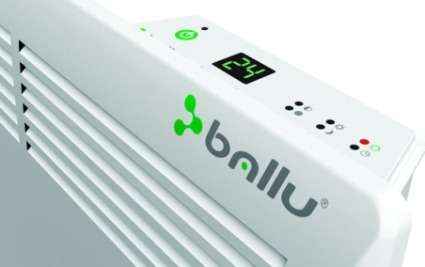

Electric convector with electronic thermostat
The presence of a thermostat and switches for heating elements allows you to regulate the temperature of heating the air in fairly wide ranges.
Heat fan
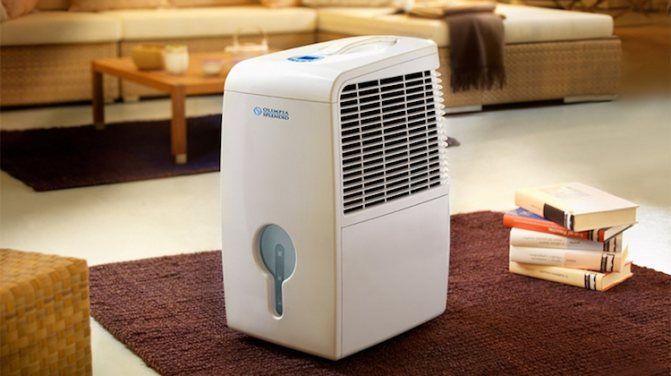

Fan heater for summer cottages
Another very popular option. They are often used not only in the country, but also at home.
Heat guns:
- Heat the air quickly;
- Mobile;
- Easy to use
- They are inexpensive (from 500 rubles) and are sold in any electronics stores and hypermarkets.
But they also have significant disadvantages:
- They work loudly enough;
- It is unacceptable to place any objects on them (for example, to dry clothes);
- If dust, debris gets in, they smell unpleasant;
There is one more feature in the operation of heat fans, which can be regarded as both an advantage and a disadvantage: they dry the air. On the one hand, this is great, the house will be drier, which means less mold and unpleasant odors. But on the other hand, it is unpleasant to be in a room with dry air.
What power to buy the device?
The average selection of the power of an electric heating convector can be made according to the following formula - 1 kW for every 10 square meters of area, provided that the height of the walls is no more than 2.7 meters. If this figure is higher, for every additional 10 centimeters of height, an additional 10% power is required.
You should also take into account the following points (if heating with convectors is the main one):
- For high-quality heating of convectors, as many as there are windows in the room.
- Corner rooms, rooms above a cold basement, or rooms with a large glass area clearly require equipment with sufficient power reserve.
These calculations should be enough for a preliminary estimate. For more details, you can check with the consultants in the store.
Oil heaters
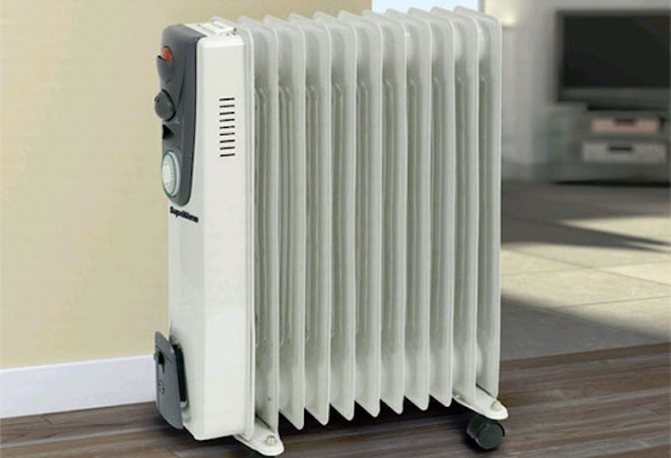

Oil heater for summer cottages
This is probably the most popular option for heating a summer cottage without a stationary stove. There is oil inside the heater, which heats up, gives off its heat to the metal body, which, in turn, heats the room.
Such heaters:
- Available in the store;
- They are relatively inexpensive;
- They do not require any installation and are easy to use;
- Mobile;
- It is convenient to move them to another room and store them;
- They work silently;
- Cool down for a long time;
- Modern models include additional functions: humidifiers, timer, temperature controller.
- You can always hang on them to dry mittens, a hat, socks.
But oil heaters have significant drawbacks:
- They get hot enough, you can get burned;
- They are heavy in weight, it is difficult to lift them to the second floor in the house;
- They consume a lot of energy (2-3 times more than carbon ones);
- They take a long time to heat up.
As you can see, this is a very good option. While you are clearing paths in the area, the heater will already heat up the room, you just have to put the mittens on top so that they have time to dry while you drink tea. Plus, if necessary, they can be transferred to a temporary hut, to a cellar, or to an apartment. Oil heaters can be left even overnight: they are safe enough, you can set the desired temperature so as not to overheat the room. And who is afraid, you can turn it off before going to bed, and the heater will warm the room for some time.
Where is the best place to install the convector?
Before choosing an electric heating convector, it is imperative to determine its location. The devices can be installed on walls (using special fasteners included in the kit) or operated mobile, freely moving around the room or from room to room. If you are only interested in the second option, pay attention to whether there are wheels in the delivery set.
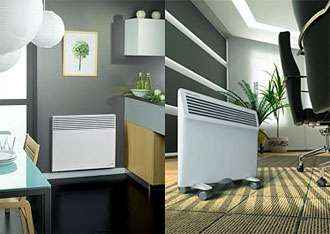

When buying, it is worth paying attention to the overall dimensions of the convector. Devices can have different heights and widths and look completely different in the interior - keep this in mind.
Approximate calculation of electricity consumption by a convector
So, we have a 1500V (1.5 kWh) convector. The desired room temperature is 25 degrees above zero.
The heater just turned on is heating, i.e. at full power. This is approximately 20 minutes in time. After the air warms up to the set temperature, the temperature control system will work, which will cut off the supply of electricity to the heater.
Now let's find out the consumption of the heater per minute - we divide 1.5 kWh by 60 minutes (hour) = 0.03 kWh. In 20 minutes, the convector will consume: 20 * 0.03 = 0.60 kWh.
Then the heater will turn on when the air temperature drops below the set 25 degrees. Let's say it takes 10 minutes to maintain the temperature for an hour (this figure is very dependent on many factors and it is impossible to specify it exactly). We consider: 10 * 0.03 = 0.30 kWh.
During the first hour of its operation, the convector consumed: 0.60 + 0.30 = 0.90 kWh.
It is wrong to think that this figure should be multiplied by 24 hours and get the consumption per day. The heater, if it is not physically turned off for a long time, will only work "for heating" once, then it will simply maintain the temperature.
It is believed that the temperature overboard is +7 degrees, the convector is loaded with work by 20-25%. It turns out that he works 4.80-6.0 hours per day. With a consumption of 1.5 kWh, it turns out: 4.8 * 1.5 = 7.20 kWh and 6.0 * 1.5 = 9 kWh. In a month - 216 - 270 kWh.
At a temperature of minus 20 degrees overboard, the convector's load can reach up to 65-75%.In hours it is 15.60 - 18.00 and in kWh - 23.40 - 27.00. Per month - 702 - 810 kWh.
If we are talking about heating an office space, then after a working day, when the room is empty, you can install the convector to maintain a temperature of + 10-15 degrees. Then the average consumption per day will be approximately 4 kWh. In a month - 120 kWh.
Providing additional heat in a residential or commercial space is the most important comfort factor in cold weather. In order to understand which convector or infrared heater is better, we decided to analyze the main features of these types of devices. For the analysis, such criteria were taken as the principle of operation, the level of environmental friendliness and safety, the price factor, dimensions, comfort of use, the rate of room heating, mobility, and others.
Frequently asked questions about electric convectors
Which convectors are more efficient - high or low?
The efficiency of the device does not depend on its size, but on the power. All kinds of "form factors" of equipment are created, first of all, for the convenience of its fitting into various interiors.
Is it dangerous to leave the convector unattended?
Definitely not. If your home's electrical wiring is capable of handling the combined wattage of concurrent appliances, you have nothing to worry about.
Can the convector be used as the main source of heating?
As a rule, yes. It all depends on the specific equipment model and manufacturer's recommendations.
Electric convector - a suitable choice for a children's room?


Quite. Among the products of most popular manufacturers there are units designed specifically for children's rooms - with a solid body, with streamlined shapes, without sharp corners. The holes in them are as small as it is, in principle, possible - all so that the child could not shove anything inside.
Comfortable sleep in a country house
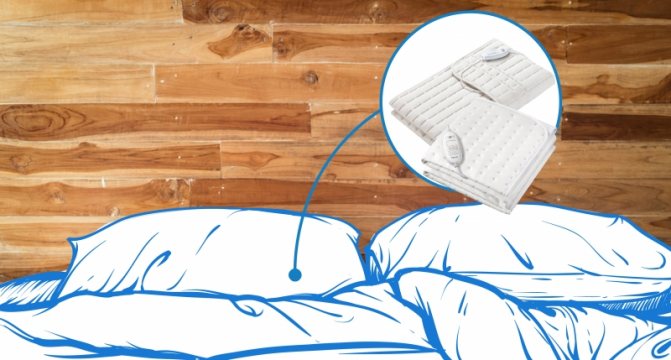

To create comfortable conditions for recreation and living in the country, you can use various household solutions. If, after returning from a ski trip to your warm home in the evening, you find that the bed has not yet warmed up, and the sheets seem to be damp, use an electric mattress or an electric sheet. They will make the bed warm and comfortable for sleeping in a short time. Such heaters consume only 40-60 watts of electricity.
A very economical and convenient solution for maintaining the optimal temperature in the rooms of a country house in winter is infrared film heaters. Placed directly under carpet or linoleum, they warm up large surfaces well with soft and pleasant warmth. In a house where an economical heating system is rationally arranged, you can live with complete comfort even in the most severe cold, enjoying communication with pure nature.
| Gennady B (Petersburg) Apr 25. 2005 16:04:57 | 2alexander_ua: Fair enough. If you are sure that the heater thermostat and the corresponding RCD and the machine are in good working order, then there is probably nothing to worry about. The phrase from the instruction manual about the continuous operation of the device will also add peace of mind. |
| DMC (Moscow, Russia) Apr 25. 2005 16:06:04 | 2alexander_ua: |
| DMC (Moscow, Russia) Apr 25. 2005 16:08:42 | 2Gennady B: |
| 2DMC: // Sometime in the news there might be an episode in which the fireman on duty says that the fire was caused by a faulty De Longhi RADIA heater. | |
| Romann (Nizhny Novgorod, RF) Apr 25. 2005 16:12:14 | 2 alexander_ua: |
| alexander_ua (Sumy, Ukraine) Apr 25. 2005 16:14:54 | 2Romann: Not always, but manufacturers of programmable heaters always, describing this function, write that you can set the turn-on time 2 hours earlier before your arrival, and when you come home, it will be cool for you. |
| BV (Moscow) Apr 25. 2005 16:15:04 | This topic is a provocation :-))) And the dispute will be eternal. |
| DMC (Moscow, Russia) Apr 25. 2005 16:33:34 | 2alexander_ua: |
| alexander_ua (Sumy, Ukraine) Apr 25. 2005 16:46:54 | 2DMC: Oh, I really wanted to. Well, you probably have to turn it off, otherwise you never know what. |
| DMC (Moscow, Russia) Apr 25. 2005 17:13:01 | 2alexander_ua: |
| BV (Moscow) Apr 25. 2005 17:41:44 | 2alexander_ua: |
| Alex / S (Alexandrov, Russia) Apr 25. 2005 17:46:01 | Once my oil heater exploded. There was a lot of smoke and oil on the floor. The heater was Soviet. Thermal relay has not tripped. |
| Gennady B (Petersburg) Apr 25. 2005 17:52:30 | I am also a witness to the case described above. |
| DMC (Moscow, Russia) Apr 25. 2005 17:56:57 | 2BV: |
| BV (Moscow) Apr 25. 2005 18:35:44 | 2DMC: |
| Gennady B (Petersburg) Apr 25. 2005 18:37:36 | 2BV: The ancient domestic oil heater also has such protection. |
| Shilov (Moscow) Apr 25. 2005 18:58:05 | In my brother's dacha, the oil heater has been working since 1973 without switching off (it is in the room, the thermostat is at a minimum). |
| BV (Moscow) Apr 25. 2005 19:00:57 | 2DMC: |
| Serg (Samara, Russia) Apr 25. 2005 22:39:27 | 2BV: |
Conclusions - what should you buy?
So, what is the best electric convector? Ideally, the device should have:
- monolithic or tubular heating element
- electronic thermostat
- protection against overheating, freezing
- sensor "deactivation" when rollover
- accessories for different installation options - both floor-standing and wall-mounted.
Optional, but very useful options can be a timer, remote control and display.
In conclusion, it should be said that electric convectors are a good choice for many reasons. Among their main advantages:
- No preparatory work required. No projects, permits, special conditions. Bought, brought, installed, connected
- Affordable cost. For $ 100-150 you can buy a mega unit
- Excellent efficiency. Almost all the electricity consumed by the convector is converted into heat energy.
Approaching the process of choosing an electric heating convector wisely, you are guaranteed to acquire a reliable unit that will heat you with high quality on long winter evenings. We wish you an extremely pleasant and useful shopping!
See also on this topic:
Indigirka, heating and cooking stove with a generator.
The warm floor is electric. Underfloor heating overview.

